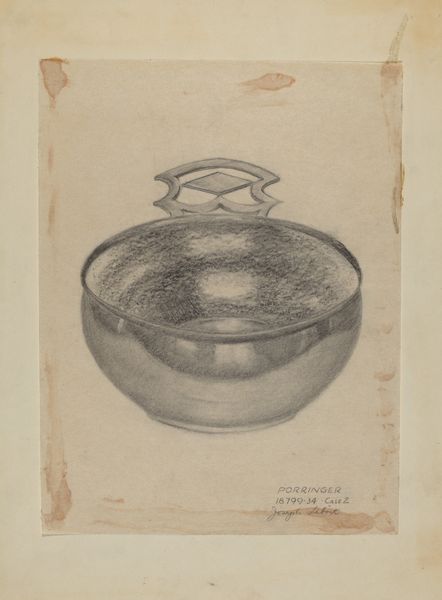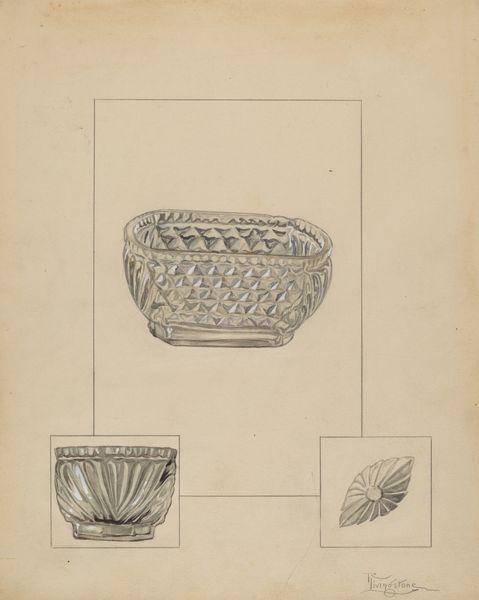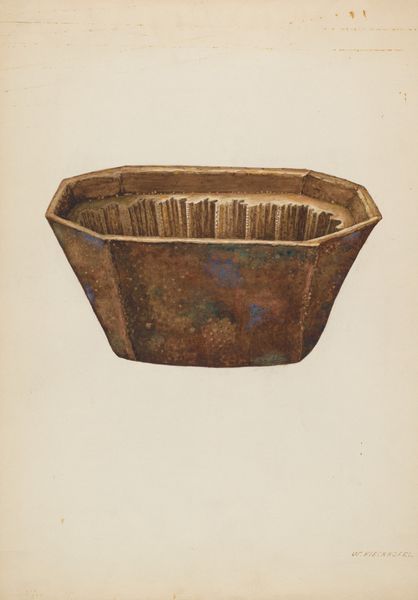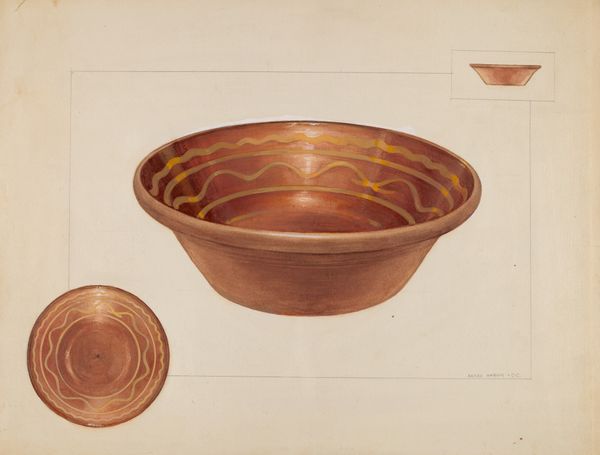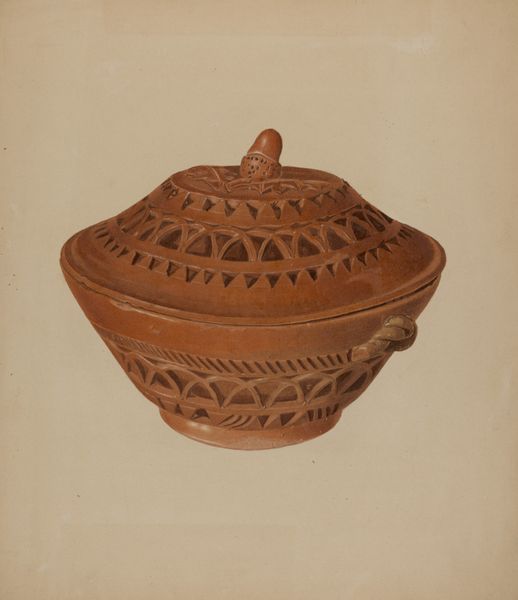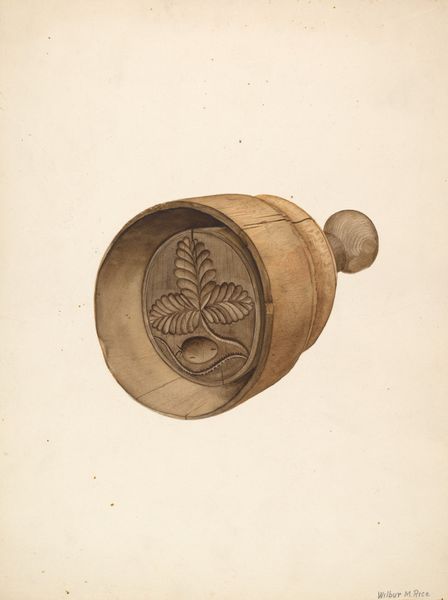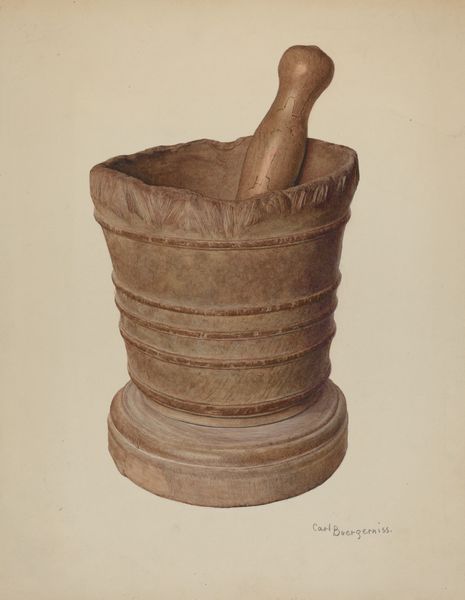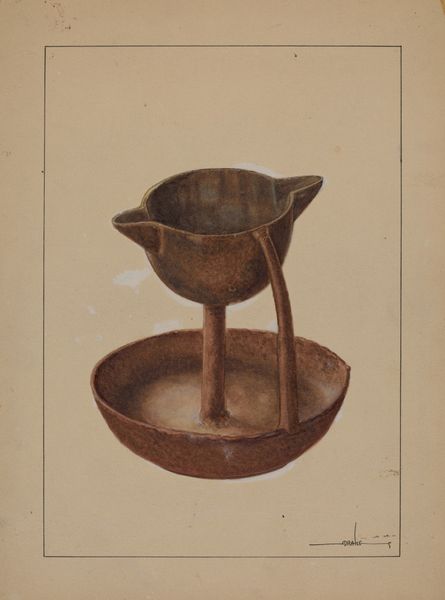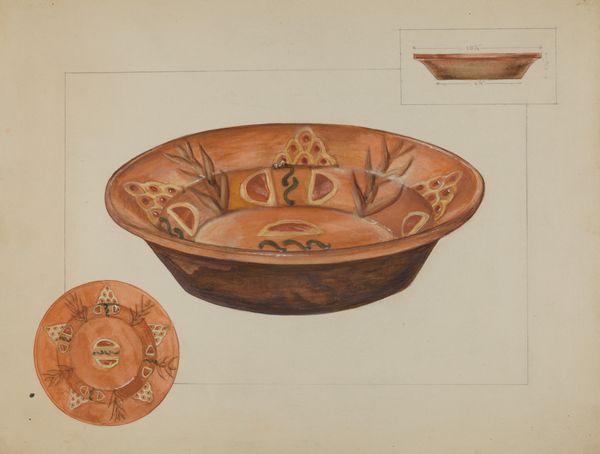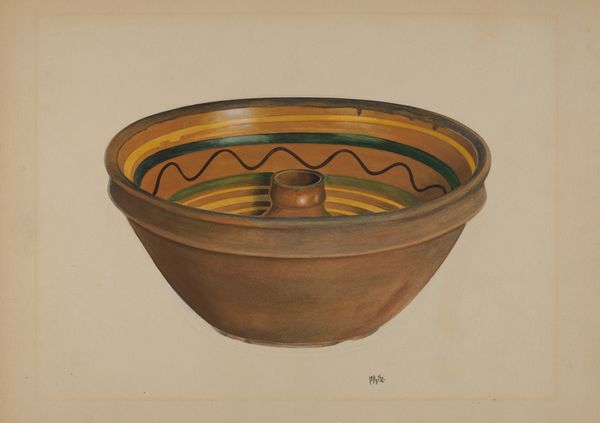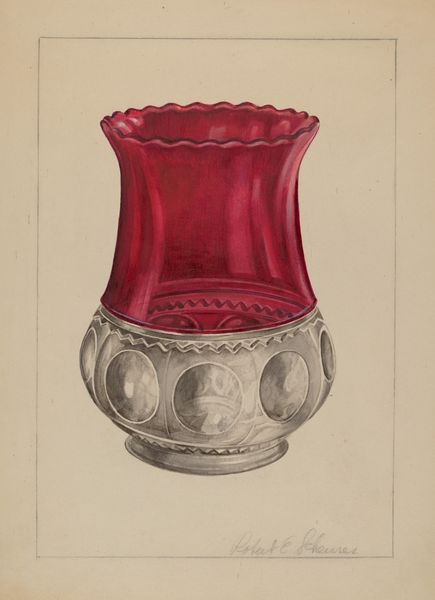
drawing, ceramic, watercolor, earthenware
#
drawing
#
ceramic
#
charcoal drawing
#
watercolor
#
earthenware
#
stoneware
#
watercolour illustration
#
watercolor
#
realism
Dimensions: overall: 35.3 x 24.1 cm (13 7/8 x 9 1/2 in.) Original IAD Object: 7 1/2" long; 5 3/4" wide; 4 1/2" high
Copyright: National Gallery of Art: CC0 1.0
Curator: This watercolor and charcoal drawing from 1936 is by Howard H. Sherman and is titled "Crockery Mold." The piece depicts, quite literally, a mold used for making decorative food items, like molded salads or desserts. Editor: It's unassuming, yet the monochromatic sepia tones and detailed rendering elevate the object. The utilitarian made artistic. There's an echo here of the Arts and Crafts movement, maybe even Shaker design principles—function, simplicity. Curator: Exactly! This drawing grants dignity to everyday objects, produced possibly for mass consumption. We tend to separate "art" from the handmade, yet these vessels themselves represent applied arts, blurring boundaries. This was made during the depression, a project commissioned by the Index of American Design to chronicle and preserve material culture in the United States. Editor: It really emphasizes the hand-crafting techniques. It’s interesting, considering industrial production was ascendant in the 30s, to see an interest in forms tied to labor, domestic life, even consumption rituals in American life. Curator: The Index operated under the WPA (Works Progress Administration). It provided employment for artists during dire times. Their contributions have enormous cultural significance because they offer views into our past. How we once lived, cooked, even presented our food. Editor: True, even the chosen media emphasizes process. Charcoal lines and watercolor washes mimic, to my eye, the earthy materials they portray - ceramic or earthenware in molded form. This gives insight into a food-centered craft from this time. What were people making in molds like these, and how did labor practices surrounding cooking and design shape communities during the depression era? Curator: Well, it demonstrates that the concept of preserving visual information regarding popular food making processes held real merit. Plus, what a valuable use of artists' skills, and what great visibility for artistic craft as work! Editor: Yes, it makes you think differently about artistic skills from a wider cultural perspective. The detail is very intricate! Curator: Absolutely. I find it fascinating how it documents a facet of American material life—a testament to what the New Deal arts programs were all about. Editor: And it brings focus back to the material circumstances, even mundane details of people's lives. Makes you think of a society focused on craft during hard economic times, making daily practices like cooking significant, in their own right.
Comments
No comments
Be the first to comment and join the conversation on the ultimate creative platform.


